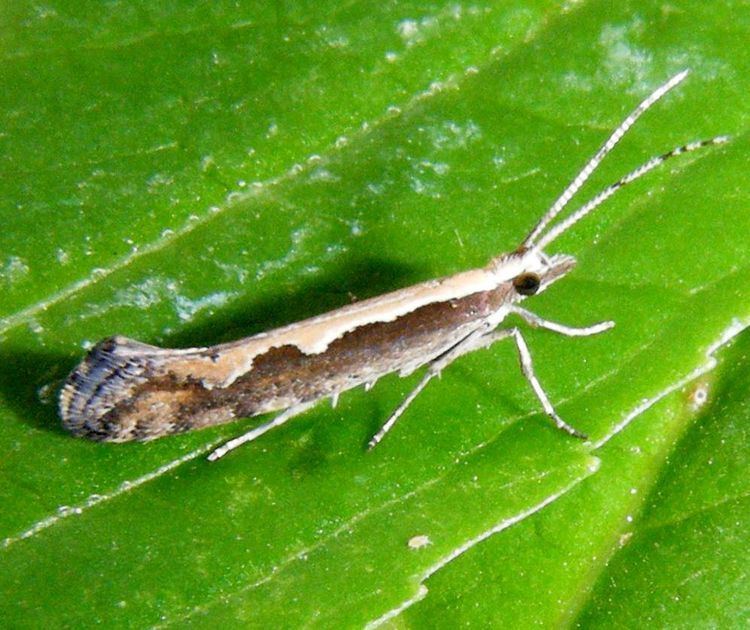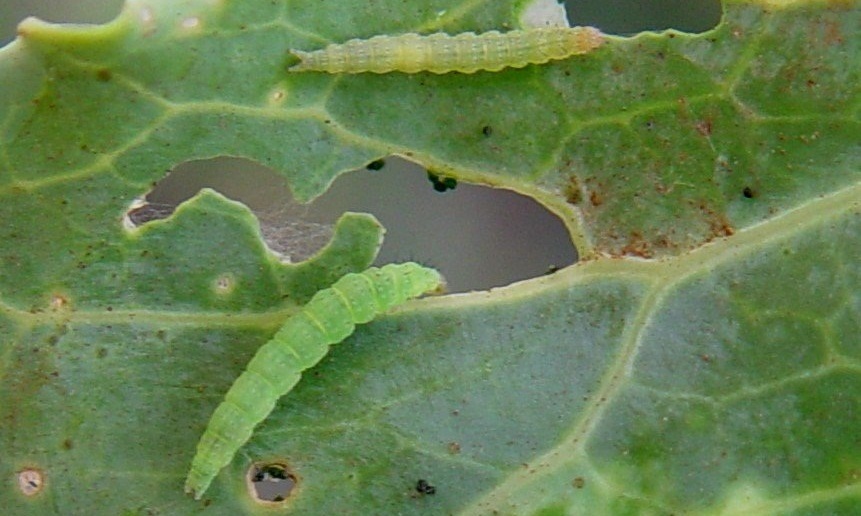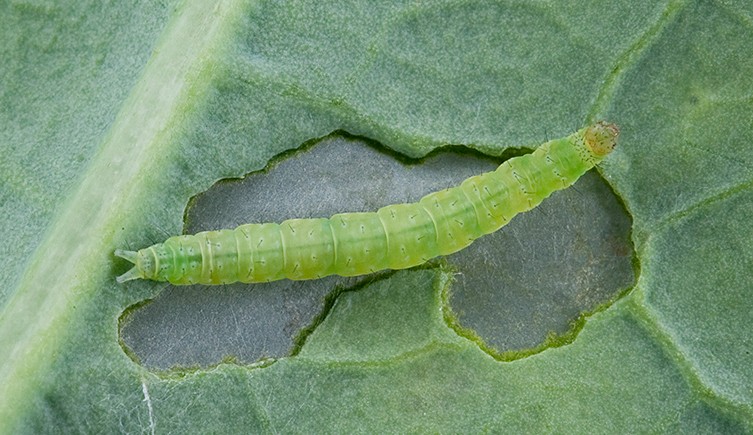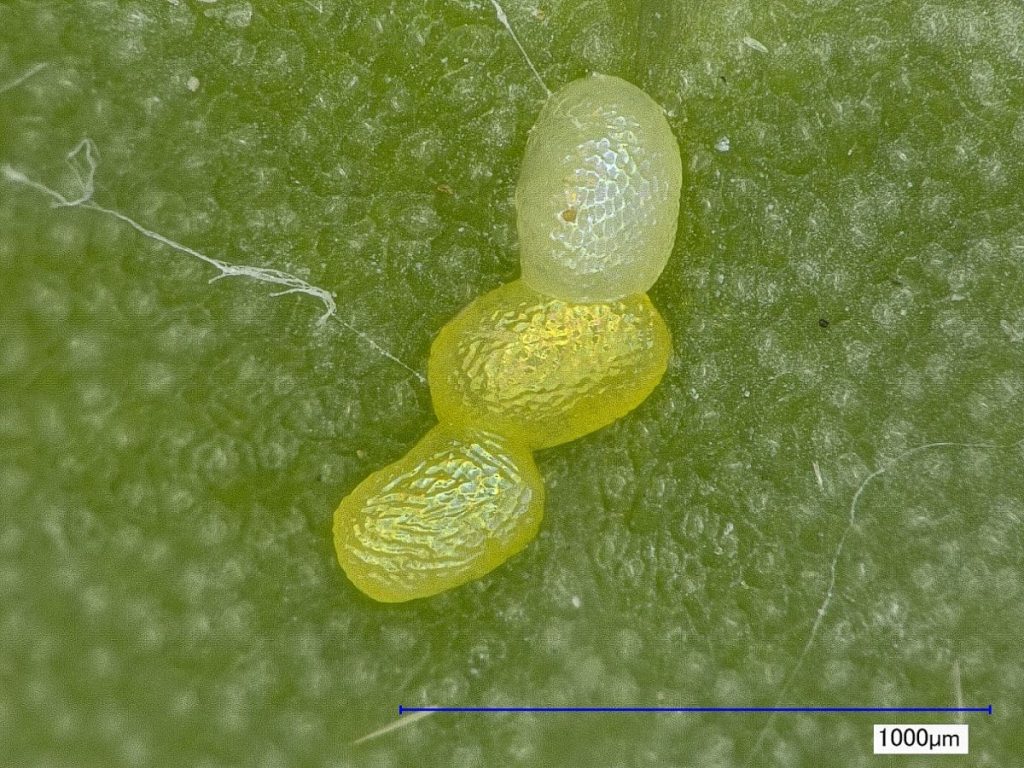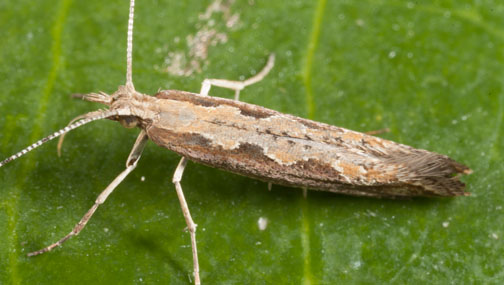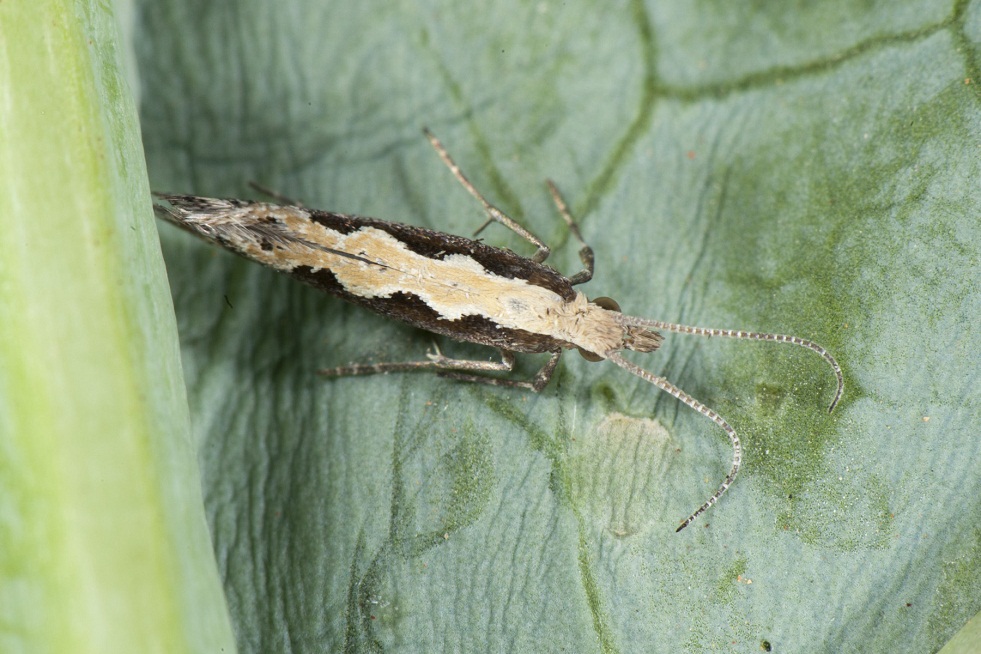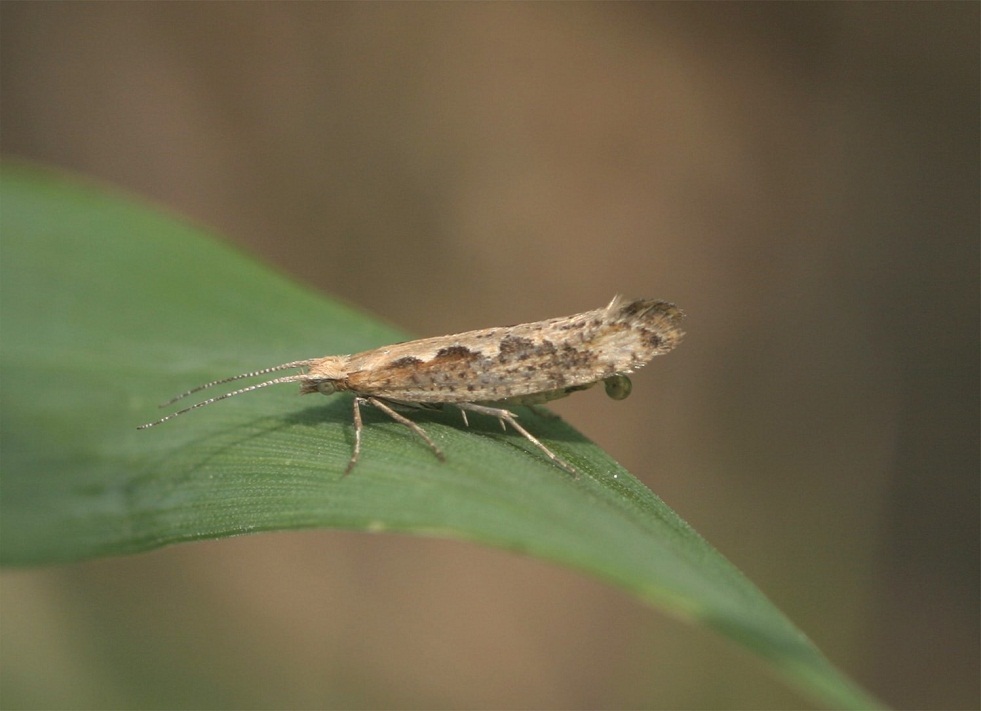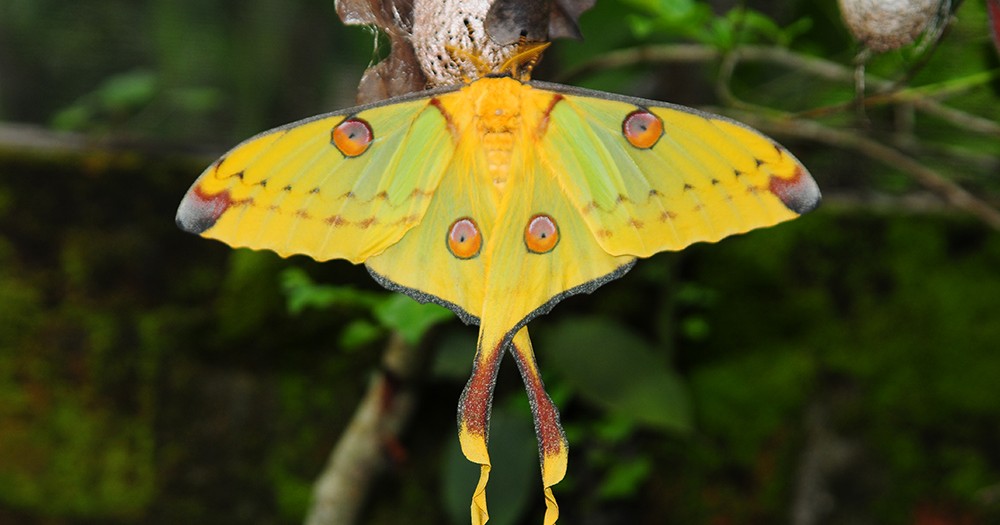Diamondback Moth (Plutella xylostella)
Diamondback moth, alternately known as the cabbage moth, is a part of the diamondback moth family, distributed across the globe from Asia to Africa, America to Australia. This small-sized moth has a diamond-shaped band on its back, resulting in its name.
alchetron.com
Scientific Classification
- Family: Plutellidae
- Genus: Plutella
- Scientific Name: Plutella xylostella
Description and Identification
Caterpillar
The larval stage has four instars, each of which has a four-day duration. In the first instar, they are colorless, but for a few black hairs. As they proceed to the later instar stages, the larvae develop an emerald green or pale body with a black head. One of the five prolegs pairs protrudes from the back, forming a V shape. The larvae are active, and if disturbed, they respond by wriggling violently in a backward motion and spinning silken strands to dangle. They follow the leaf-mining (where they eat in the plant’s leaf tissues) feeding technique.Chewing the leaf results in irregular patches causing immense damage to the foliage.
Pupa
They are yellow with a length of 8 mm, mostly wrapped within a silken cocoon. The pupal stage lasts for eight days on average but may extend to about fifteen days. Just before merging into an adult, they become deep yellow or brown. The pupa either remains in the food plant’s lower or outer leaves. However, in the case of broccoli or cauliflower, they are seen on the florets.
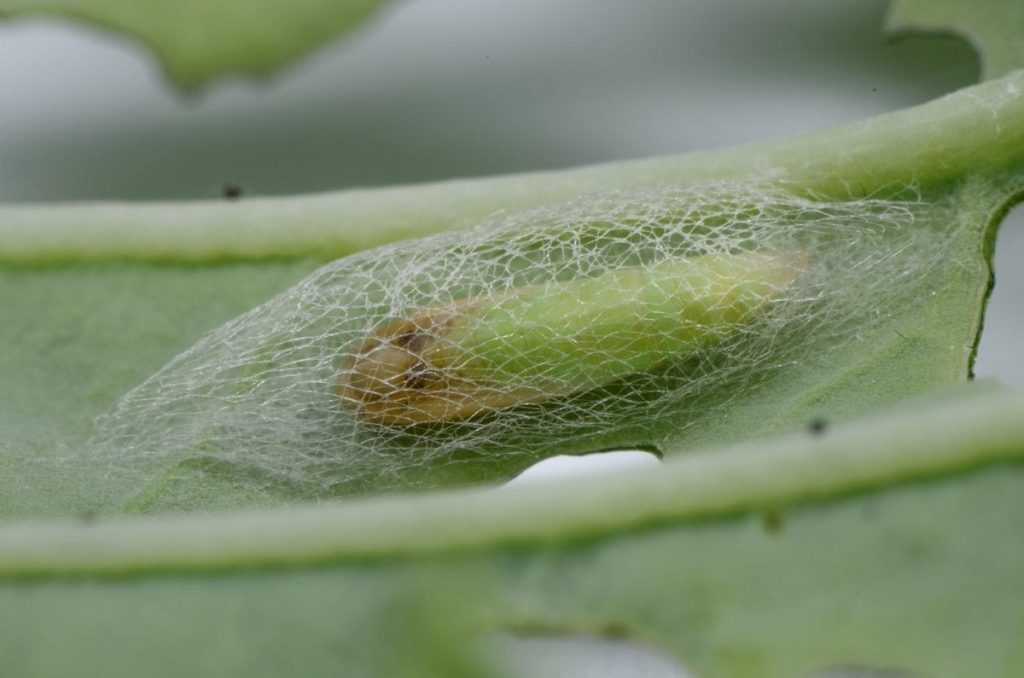
cabi.org
Adult Moth
Sexual Dimorphism: Present
Color and Appearance
Forewings: The narrow forewings, when opened, appear brownish-gray appearing lighter on the front covered with dark speckles. The posterior part has a creamy stripe with a wavy pattern, mainly seen in males. When closed, the wavy markings join and resemble three yellow diamonds, evident from its name.
Hindwings: When opened, they are light grey, remaining pointed close to the apex. When closed, the pattern is the same, with the diamond appearance prominently visible.
Average Wingspan: 1.2 – 1.5 cm
Flight Pattern: Consistent
Season: Not recorded
Quick Facts
| Distribution | Asia, Europe, Australia, America, New Zealand, Hawaiian Island |
| Habitat | Fields near cruciferous crops |
| Predators | Lacewings (eat the eggs and young larvae), and parasitoids like wasps, |
| Lifespan of Adults | 3 -4 weeks (males live for a shorter span) |
| Host Plants | Cabbage (their main host plant), Chinese cabbage, brussels sprouts, cauliflower, collard greens, radish, kale, mustard, kohlrabi, watercress |
| Adult Diet | Mostly leaves |
Did You Know
- Their alternate name, cabbage moth, is because they prefer cabbages as their primary host plant. The female lays and deposits eggs on cabbage leaves, while the larva also feeds on them.
- The females have the innate power to use their sense of taste and smell to determine the place where their eggs can be laid. The presence of this stimulus results in an increased number of eggs being deposited
- They have a wide geographic range, while their discovery in North America dates back to the 19th century, in 1854 in Illinois, in 1883 in Florida, and 1905 in British Columbia.
- These moths have proved harmful to several crops. As for adaptive measures, chemical control involving pesticides and installation of traps are a few of them.
Scientific Classification
- Family: Plutellidae
- Genus: Plutella
- Scientific Name: Plutella xylostella

